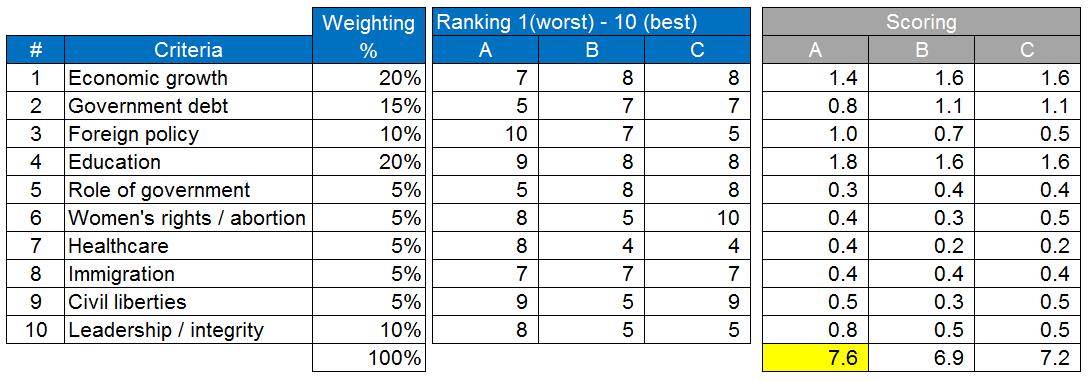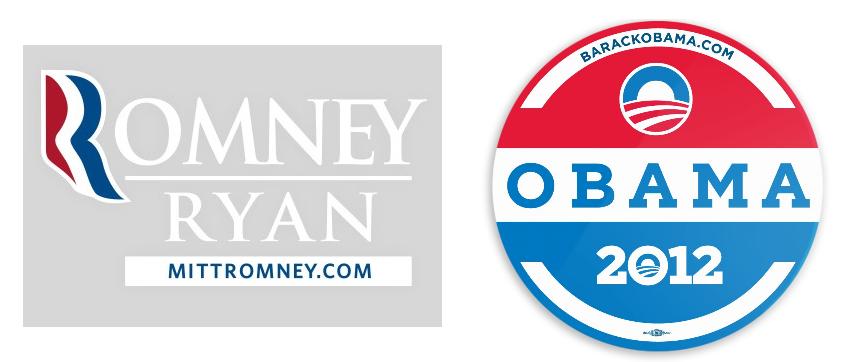Oye Vey, Presidential Elections
Tomorrow is election day in the United States. The two candidates (and their super-PACs) have spent an estimated $6 billion in political ads. What a waste of money. I suppose that these ads can sway some voters, but that is too bad. Americans should spend more time thinking through the problem, and come up with their own opinions. Should we use evaluation forms to do this?
To a consultant, any decision will be based on both logic and intuition. For intuition, perhaps advertisements and sound bites are fine. Basically, who do you want to elect?
For a more logical approach, use evaluation forms
Consultants use this all the time to simplify decision making. First, determine what the evaluation criteria will be. Give each factor a weighting. Evaluate each choice separately. Then add up the score and see which choice scores the highest.
Example: Temp strategic sourcing
I have sourced temporary labor for clients multiple times. You can see that there were 6 criteria – everything from the geographic areas that the agencies placed temporary workers to the pricing that they charged. All these factors were weighted differently. For example, pricing was very important (40% weighting), while the references were only weighted at 5% (since all references are usually good). The scoring is only hypothetical.
Had 12-15 stakeholders score the vendors
We had a half dozen vendors submit request for proposal (RFP) responses. Then we had client stakeholders score the responses. The winning scoring is shown in yellow. In this case, vendor 1 was chosen because they had the best weighted average score. The client eventually shifted more than $5 million of annual spend to that one vendor.
How about we use this for the President?
- Make a list of the key criteria you believe are important
- Give each of those issues a weighting (total of 100%)
- Rate each candidate for each issue
- Total up the weighted average for each score, then total
 Yes, it’s a subjective tool
Yes, it’s a subjective tool
Even the selection of the criteria and the weighting can tilt the outcome one way or another. For example, “Gun Control” or “Environment” or “Gay Marriage” or “Prayer in School” or “Legalization of Marijuana” or a host of other issues did not make the list of criteria. That might tell you something about what the evaluators think are important – even before any scoring takes place.
However, it’s more objective than gut feel
- It forces the evaluator(s) to determine the criteria ahead of time
- It forces the evaluators to make trade offs between the criteria (e.g., totals 100%)
- You can have multiple evaluators
- It sets up a neutral system to collect the feedback and take some of the emotion out of it.
I used this to evaluate candidates. I will cast my ballot, and you should too.


